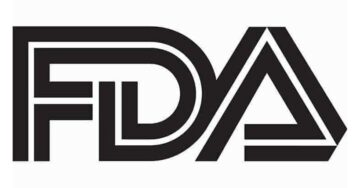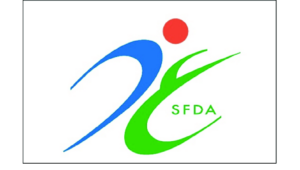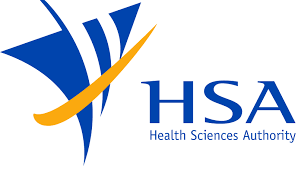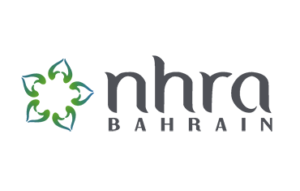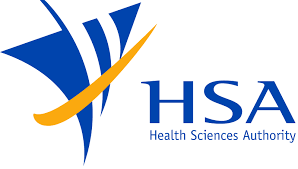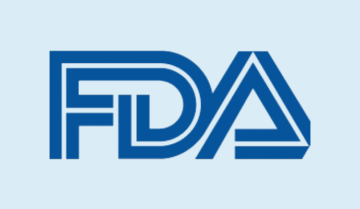The new article highlights the aspects related to the labeling for new assay-instrument combinations, and also to the way the information about them should be added to a public database.

Table des matières
The Food and Drug Administration (FDA or the Agency), the US regulating authority in the sphere of healthcare products, has published a guidance document dedicated to the replacement reagent and instrument family policy for in vitro diagnostic (IVD) medical devices allowed to be marketed and used in the US. The document is intended to provide additional clarifications regarding the applicable regulatory requirements, as well as recommendations to be considered by medical device manufacturers in order to ensure compliance thereto. At the same time, provisions of the guidance are non-binding in their legal nature, nor are intended to introduce new rules or impose new obligations. Moreover, the authority explicitly states that an alternative approach could be applied, provided such an approach is in line with existing legislation and has been agreed with the authority in advance.
The policy described in the guidance addresses the situations when an assay is used for a different instrument family. The scope of the guidance covers, inter alia, the aspects related to labeling.
Labeling: Special Considerations
Selon la règle générale, labeling for IVDs must comply with 21 CFR parts 801 and 809 and any applicable device-specific requirements (e.g., special controls, restrictions, or limitations found in a clearance with limitations). As further explained by the authority, the documentation accompanying the product (namely – package inserts) should provide all the information about the procedural steps to be performed when using an assay with a new instrument. Such information is vitally important to ensure the safe and efficient use of a new assay-instrument combination. Sometimes the information about settings to be used for a new combination could be included in an application sheet – if this is the case, the references should be provided between the application sheet and the package insert to ensure clarity and completeness of the information provided. Apart from that, the authority also states that the package insert should provide precise information on specific instruments tested for use with the assay in question. Should various modifications of instruments be applicable, the appropriate information should be included as well. The FDA additionally emphasizes that the addition of a new combination of assay and instrument within the scope of this guidance should not significantly affect assay labeling, including performance claims.
Clinical Laboratory Improvement Amendments (CLIA) Categorization
Another important aspect addressed in the present guidance document issued by the FDA relates to the CLIA categorization which usually follows the clearance or approval (based on the particular framework the product in question is subject to). In order for the test system in question to be entered into the CLIA database, the manufacturer of an assay used in the system should submit the appropriate request to the authority. According to the guidance, such a request, when referencing to an assay intended to be used with a different instrument under the Replacement Reagent Policy or Instrument Family Policy should include:
- A signed cover page, with contact information, clearly designating the request “For CLIA Categorization Only”. The authority also recommends the applicants to include a statement that the manufacturer has followed the logic scheme and considered the issues in this guidance.
- Specifications of which instruments (cleared or family member) and cleared assays are being combined, including reference to all related assay and instrument 510(k) numbers. This information can be most clearly represented in table format, especially if multiple assays or instruments are involved.
- The package insert (and application sheet, if applicable) for the new test system specifying the additional instruments. Inclusion of the 510(k)-cleared package insert is also recommended to help streamline the categorization process.
The authority also mentions that in the case the particular instrument family member used for a new combination was neither included in the initial 510(k) application nor previously categorized, the applicant should also provide the Operator Manual or an expert from it covering such details as the name and intended use of an instrument in question details on its manufacturer and distributor, as well as any changes that took place.
It is also important to mention that in case the assay in question is manufactured by another manufacturer, and the assay is expected to be used with a new instrument family member, its manufacturer should also provide relevant confirmation to be issued by the manufacturers responsible for an instrument.
Once a CLIA request has been received, the authority will assign a number, notify the applicant and then notify the latter about categorization. According to the guidance, the expected timeframe for such an action is 30 calendar days from the date of request. Upon completion, the authority will also publish information in the CLIA database which is publicly accessible. The authority additionally emphasizes that categorization in response to a CLIA categorization request is not a substantial equivalence determination, and is not meant to indicate FDA review of the manufacturer’s internal assessments and testing. Thus, a product placed on the market under the present policy should not be used as a predicate device in the context of a new 510(k) submission.
In summary, the present FDA guidance outlines specific aspects to be considered with respect to labeling for new assay-instrument combinations in order to ensure all the important information is duly communicated to potential users. The document also describes the approach to be applied with respect to CLIA requests.
Comment RegDesk peut-il aider?
RegDesk est un système holistique de gestion des informations réglementaires qui fournit aux entreprises de dispositifs médicaux et pharmaceutiques des informations réglementaires pour plus de 120 marchés dans le monde. Il peut vous aider à préparer et à publier des applications mondiales, à gérer les normes, à effectuer des évaluations des modifications et à obtenir des alertes en temps réel sur les modifications réglementaires via une plate-forme centralisée. Nos clients ont également accès à notre réseau de plus de 4000 experts en conformité dans le monde entier pour obtenir une vérification sur des questions critiques. L'expansion mondiale n'a jamais été aussi simple.
Vous souhaitez en savoir plus sur nos solutions ? Parlez à un expert RegDesk dès aujourd'hui !
->
- Contenu propulsé par le référencement et distribution de relations publiques. Soyez amplifié aujourd'hui.
- PlatoData.Network Ai générative verticale. Autonomisez-vous. Accéder ici.
- PlatoAiStream. Intelligence Web3. Connaissance Amplifiée. Accéder ici.
- PlatonESG. Automobile / VE, Carbone, Technologie propre, Énergie, Environnement, Solaire, La gestion des déchets. Accéder ici.
- Décalages de bloc. Modernisation de la propriété des compensations environnementales. Accéder ici.
- La source: https://www.regdesk.co/fda-on-reagent-replacement-policy-labeling-and-clia-requests/?utm_source=rss&utm_medium=rss&utm_campaign=fda-on-reagent-replacement-policy-labeling-and-clia-requests
- :possède
- :est
- :ne pas
- 1
- 30
- a
- A Propos
- accès
- accessible
- Selon
- Action
- ajoutée
- ajout
- Supplémentaire
- En outre
- adresses
- administration
- avancer
- affecter
- agence
- alertes
- Tous
- permis
- aussi
- alternative
- amendements
- an
- ainsi que
- Une autre
- tous
- A PART
- en vigueur
- candidats
- Application
- applications
- appliqué
- une approche
- approprié
- approbation
- SONT
- article
- AS
- d'aspect
- aspects
- évaluations
- At
- autorité
- basé
- BE
- était
- va
- jusqu'à XNUMX fois
- by
- Calendrier
- CAN
- maisons
- centralisée
- Change
- Modifications
- prétentions
- clarté
- clairement
- CLIENTS
- combinaison
- комбинации
- combiné
- communiqué
- Sociétés
- achèvement
- conformité
- se conformer
- confirmation
- considéré
- contact
- contexte
- contrôles
- pourriez
- couverture
- couvrant
- couvre
- critique
- Base de données
- Date
- jours
- dévoué
- décrit
- détails
- détermination
- dispositif
- Compatibles
- différent
- document
- Documentation
- drogue
- e
- efficace
- souligne
- assurer
- entré
- notamment
- existant
- avec des données
- attendu
- expert
- de santé
- expliqué
- famille
- fda
- suivi
- suit
- nourriture
- Administration des aliments et des médicaments
- Pour
- le format
- trouvé
- Framework
- De
- plus
- Général
- Global
- expansion mondiale
- l'orientation
- Vous avez
- la médecine
- vous aider
- Faits saillants
- holistique
- HTTPS
- if
- important
- aspect important
- imposer
- amélioration
- in
- comprendre
- inclus
- Y compris
- inclusion
- indiquer
- d'information
- initiale
- Inserts
- instrument
- instruments
- Intelligence
- prévu
- interne
- développement
- introduire
- impliqué
- Publié
- vous aider à faire face aux problèmes qui vous perturbent
- IT
- SES
- Savoir
- l'étiquetage
- laboratoire
- Légal
- Législation
- limites
- Gamme
- logique
- gérer
- gestion
- Système de gestion
- Manuel
- fabriqué
- Fabricants
- Fabricants
- Marché
- Marchés
- largeur maximale
- signifiait
- médical
- dispositif médical
- dispositifs médicaux
- membre
- mentions
- Modifications
- PLUS
- Par ailleurs
- (en fait, presque toutes)
- plusieurs
- must
- prénom
- à savoir
- Nature
- Ni
- réseau et
- n'allons jamais
- Nouveauté
- ni
- nombre
- numéros
- obligations
- obtenir
- of
- on
- opérateur
- or
- de commander
- nos
- grandes lignes
- plus de
- paquet
- page
- particulier
- les pièces
- performant
- effectué
- Pharmacie
- Place
- plateforme
- Platon
- Intelligence des données Platon
- PlatonDonnées
- politique
- défaillances
- précis
- Préparer
- représentent
- précédemment
- processus
- Produit
- Produits
- fournir
- à condition de
- fournit
- public
- publiquement
- publier
- publié
- question
- fréquemment posées
- en temps réel
- reçu
- recommandations
- recommandé
- recommande
- référencement
- en ce qui concerne
- régulateur
- régulateurs
- en relation
- pertinent
- remplacement
- représenté
- nécessaire
- demandes
- Exigences
- respect
- réponse
- responsables
- restrictions
- Avis
- Règle
- Courir
- des
- même
- programme
- portée
- Paramétres
- feuille
- devrait
- signé
- de façon significative
- étapes
- situations
- Solutions
- Sources
- parler
- spécial
- groupe de neurones
- Normes
- Déclaration
- États
- Étapes
- rationaliser
- sujet
- Soumission
- soumettre
- Ces
- tel
- RÉSUMÉ
- combustion propre
- table
- tester
- examiné
- Essais
- qui
- La
- les informations
- leur
- Les
- puis
- this
- Avec
- fiable
- calendrier
- Titre
- à
- a
- sous
- sur
- us
- utilisé
- d'utiliser
- utilisateurs
- en utilisant
- d'habitude
- divers
- Vérification
- souhaitez
- était
- Façon..
- WELL
- quand
- qui
- sera
- comprenant
- dans les
- partout dans le monde
- you
- zéphyrnet


